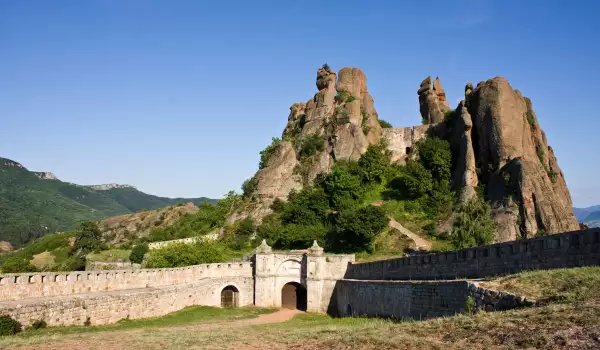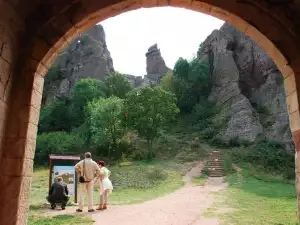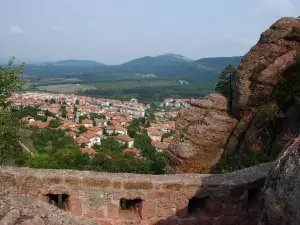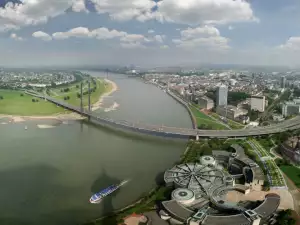Belogradchik Fortress

Belogradchik Fortress was built, when the Balkan peninsula was in the territory of the Roman Empire. Romans used in the construction the natural accessibility of the rocks, and stood only two walls in the northwest and southeast. They served as barriers from other countries and now serve as two enormous rocks, 80-100 m high in the fortress walls which are healthy and thick in foundations of 4 to 5 meters high by 12 to 15 m. The purpose of this Roman castle was to serve as a fortress - a watch. In late antiquity it was part of the defense system of the Roman, then Byzantine Empire.
The Belogradchik Fortress has two water reservoirs (cisterns) for water. They are carved into the rocks at about 5 meters deep and are filled with snow and rainwater. Collected water is kept as emergency stocks.

In the second half of the XIV century the Bulgarian ruler, Ivan Sratsimir, expanded the existing fortification. Two partitions rises from the southeast and northwest and stayed in the garrison. During his reign in Belogradchik Fortress this is the second biggest after Vidin which is also used as a fortress-castle.
After the capture of the Bulgarian lands from the Turks at the end of the XIV century In 1396, they captured the fortress near Belogradchik. The people’s strong movements and frequent riots and uprisings in the region forced the Turks to take the expansion of the fortress. By the beginning of the XIX century, they made minor corrections without changing its medieval appearance.
Complete reconstruction and expansion of the Belogradchik Fortress was made from 1805 to 1837 under the guidance of French and Italian engineers. During this period the fortress yields its present form. The castle consists of three yards separated by portals with massive doors, studded into iron bars. Every yard was capable of self-defense. Guard facilities are built with sites that embrasures for guns, barracks and warehouses, arsenals and inprisonment.

The Belogradchik Fortress had mills for salt and wheat and 4 reservoirs. One great importance for the defense of the fortress is it had outer defensives zone, which consists of thick stakes and cords of bars baskets filled with stone and earth buried in the ground. As a military facility it was last used in the Serbian - Bulgarian War in 1885.















